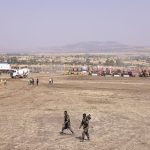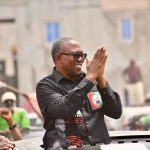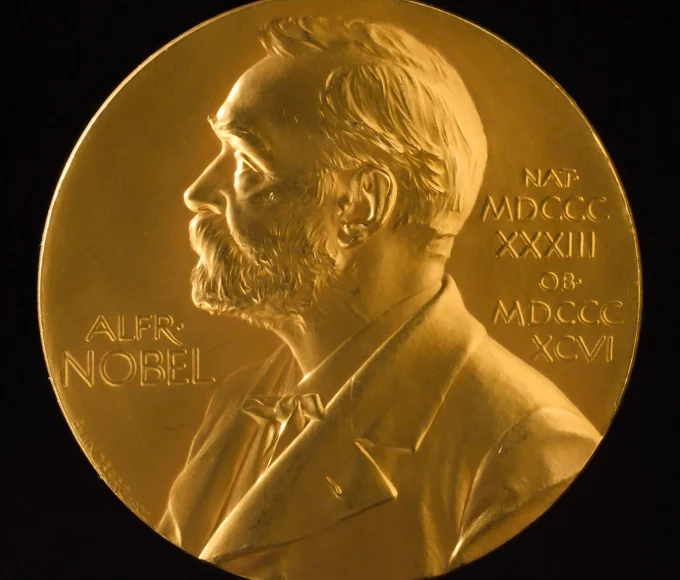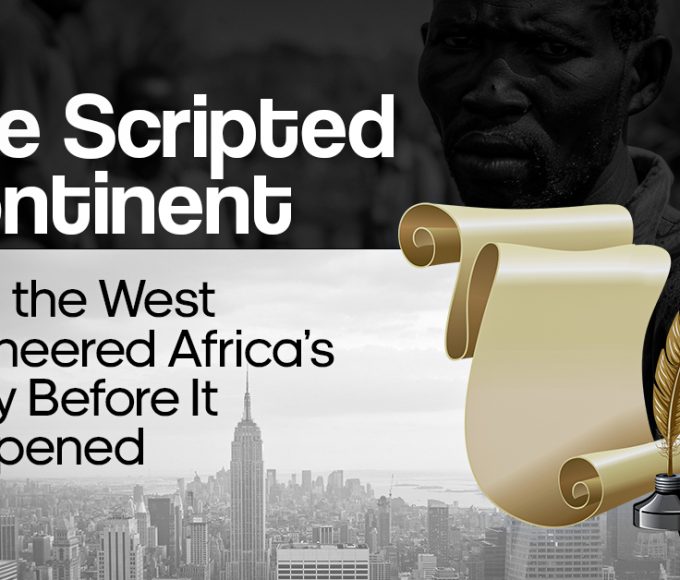

What do we mean when we say electoral consequences—and consequences for whom?
There is this widespread, almost unquestionable, consensus—mostly among dissidents—that it is all well and good to consciously disparage, alienate, and condemn the masses to the dead weight of the present socio-economic miseries ravaging the entirety of this country. The justification for this, in a nutshell, is that a sizable mass of the public, particularly in the South-West and Core-North, voted for the recently enthroned colossal affliction of the EmiLoKan variety, otherwise known as Bola Ahmed Tinubu. We are told that those who are complicit in the enthronement of this catastrophe, even if marginally, must be thrown to the wolves of socioeconomic privation and abandoned to suffer the consequences of undesirable electoral outcomes.
Understandably, however swift or sly human actions may be, even when they are exercised as electoral choices, they are inexorably shadowed by their consequences. And yet, to insist on consequences without interrogating the whole premise and its accompanying circumstances is to miss the vital lessons of history. Concretely, the first lesson that the champions of electoral consequences must note is more cautionary than punitive, and this is the fact that they have rendered themselves victims of a blinding political fallacy. In the main, this mirage is animated by the assumption that the masses of this country were so free in the heavily militarised and thuggified 2023 general elections that they played a decisive role in the self-selection of the incumbent illegitimate President of Nigeria.
On this note, it must be recalled that all objective observers of the elections—including the stonewallers whose belated verdict is altogether revealing—witnessed the large-scale intimidation, ethnocultural disenfranchisement, class objectification, and extensive electoral violence that marred the elections through and through. Excepting the minuscule, feather-headed core of the EmiLoKan cult and their credulous audience, which group of ordinary Nigerians can we wholeheartedly say voted the mandate-stealer in Aso Villa that was not manipulated or intimidated in one way or the other? From the clusters of interconnected evidence known to the public and those on the INEC Result Viewing (IReV) portal, all unbiased observers can confirm the falsification and bastardisation of election result sheets by the compromised electoral umpireship. But for all that, the subverters of the people’s will could not tamper with the election results any more than they could grudgingly concede six million votes to a political movement that was less than 15 months old.
The question that the advocates of consequences must ask themselves is this: If the Nigerian political class can concede six million votes to a movement that was less than two years old at the time, how many more votes did they, in fact, nullify in favor of their bourgeois class from which, unfortunately, the head of the movement itself cannot sufficiently whitewash himself? We can only hedge ourselves to a conservative estimate of about 50% of the ballot, which would have primed the movement for a sweeping landslide with 12 million votes. Hence, the constantly touted idea that the Tinubu affliction has somehow been midwifed by the ruck of this country is a political fallacy and, to be sure, a clear instance of class suicide. The hope of the EmiLoKan cult, and by extension, the totality of the political class, is for ordinary Nigerians to continually misidentify their actual adversary so their immiseration and ruin can be inviolably complete.
Between the Oppressor and the Oppressed
The strategy of the hideous EmiLoKan cult is no different from the age-long strategy of the Nigerian political class in general: to divide and conquer. But it must be mentioned that the majority of our people who parrot the phrase “divide and conquer” almost always miss the point because they tend to substitute the substance for the peripheral. Whereas on the one hand, the purpose of this strategy—as far as the Nigerian state and the class it represents are concerned—is to perpetuate the brute domination of the oppressive class over the oppressed collective by entrenching and extending the quicksands of neoliberal policies; on the other hand, the sinister countermark coextensive with this strategy is that it is overarched by a glossy exterior which serves to distract the oppressed and fissured class from the fact that it will remain subjugated when divided against itself. To this extent, the Nigerian state is both a representation of oppressive class rule and a symbol of unnoticed class antagonism.
We must concede to those who say there is a strong dividing line between the digital effusions of netizens and the realities of ordinary citizens on the streets. Recent statistics show that only 31 million Nigerians, or 14% of the country’s population, are on social media; internet penetration has yet to reach 44% of the population; and 46% of the population reside in the rural areas where ethnoreligious terrorists abduct and murder farmers, rape women, destroy farmland, and displace people from their ancestral land. In a country of over 200 million people, this means that at least three-fourths of the total population are not on social media—the majority of whom are living under unpleasant economic conditions—consigning them to the brutal propaganda of the political class—and in this case, with the EmiLoKan cult at the vanguard.
It must be said, however, that the clinical efficiency with which the Nigerian state executes its antagonism against its own people must firmly undergird the consciousness and character of the mass resistance to it. Presently, the oppressed class in Nigeria do not fully recognise themselves since there is already an overbearing preponderance of ideological deficit in the country. This is largely due to the active structures and siege of neoliberalism—the globalisation of capitalist conditions, market fundamentalist ideology, and bourgeois oppression—everywhere around us. These structures and their instruments of beleaguerment continue to deepen immiseration, inequality, and class destruction in developing countries like ours. While workers and peasants alike suffer the consequences of these conditions of mass immiseration, those who feel the biting ramifications the most are the 120 million multidimensionally poor in Nigeria. These are the people that the 31 million folks on social media—roughly 5 million of them on X (formerly Twitter)—would have us demonise. What is more indicative of self-destruction than this?
I am of the belief that all moral judgments of the poor and oppressed people of this country must be tempered with the knowledge that they are vastly at a great existential disadvantage, the scope of which is incomprehensible to the reactionary and opportunistic forces in any oppressive society. One distinct feature of the poor that sets them apart from the civil service and private sector salariat is that they are very conscious of their class disadvantage. Indeed, they are all too conscious of the fact that their very existence is plagued by existential antinomies. To understand the masses of our country, indeed to understand the multidimensionally poor who constitute the majority of our population; the impoverished peasants who can no longer go to farm because ethnoreligious terrorists are all too willing to seize their land and viciously end their lives to boot; the unpaid and underpaid workers; the underemployed with MScs and PhDs playing sentry to the homes of the political class and the bourgeoisie; the indentured laborers trapped in bourgeois upper-middle-class and upper class homes and subjected to dehumanising tasks day in, day out by people (sometimes half their age) with ghastly intentions to subject even the offspring of the indentured to generational servitude or worse—to understand them all, one must be willing to fully submit to the internalisation of the absurd, to consciously make a break with the abstraction of the conditions of the masses, the workers and peasantry and the dire economic conditions on the streets, and to meet them all with humility and feeling at every point of their existential predispositions without losing the exigency of rigorous intellection.
To assume that this demography of our society, which is all too alienated from the quixotic effusions of Nigerians on social media, will decide positively on anything they do not fully understand is to discountenance the fact that the masses are not a simple binary, that they are suffused with their own contradictions and duplicities; that they are too miserable to be conscious of their own miserableness; that their capacity to do wrong is infinitely colossal and more tethered to their survival than their working-class revolutionary counterpart, alienated and prejudiced, can claim to understand. The oppressive political class knows this, and because their economic and political dominance depends on the perpetual miserableness of the masses—the unrelieved exploitation of the permanent survivalist condition and drive of the masses in neoliberal societies—they weaponise the manipulation of the masses and institute programs that outwardly appeal to their material deficiencies and unfelt frivolities.
In this sense, the deployment of Igbophobic bile during the electioneering period by the EmiLoKan cult must be understood as a premeditated bourgeois program to activate the inactive, undirected prejudices of the masses, to manipulate their latent rage and yearning for a conspicuous enemy that does not just exist in abstraction. To give life to this hideous program, the cult recruited the bootlickers and the booboisie within their ranks and, in executing their role of sowing discord and causing distractions, they further wounded the Igbo identity and created a fissure among the masses that would outlast even the elections. Ultimately, the deployment of this large-scale manipulation must be understood, first, as a perfection of the “divide and conquer” strategy on the one hand, and second, not so much as an attempt to win over the masses but as a ploy to keep the masses distracted, to temporarily immobilise them to the benefit of the oppressive class.
The immediate consequence of this double whammy is that it has enlarged the alienation within the ranks of the oppressed, deepened the divide between netizens and the masses on the streets, and created an ethnocultural rift between ethnic groups that are historically aligned by way of ethnographic convergency. But it does not end there: the further ramification of this deliberate manipulation is that it stunts the capacity of the revolutionary class, particularly the workers and peasantry, to make a revolution, as we are witnessing currently. In short, the commodification and manipulation of the masses by the political class ensures that the former’s existence is rooted in a continuing social, economic, and political disadvantage, which manifests both internally within its own class and externally in its relations with its oppressor.
Substitutionism and the Revolution
Notwithstanding the aforementioned, we must not underemphasise the social resilience of the masses. By character, the bulk of the revolutionary class—that is, the mass of the multidimensionally poor, peasants, and workers (including the skilled and unskilled, unemployed and underemployed)—remains a sedated volcano that retains its permanent revolutionary content, its capacity for wholesale eruption. On this point, the enduring agenda of the political class is to ensure that this revolutionary content—the very character which empowers the oppressed class in the face of the ferocious antagonism of the oppressive class—is palliated and ultimately eliminated by all possible means. As a result, bourgeois substitutionism is the caustic but seemingly innocuous prophylactic used by the oppressive class to compromise the revolutionary character of the masses. In the broad sense, bourgeois substitutionism is the specious replacement of concrete revolutionary objects and conditions with manufactured simulacrums.
In this instance, we see the specious substitution of the antagonist for a pseudo-antagonist, the disingenuous substitution of the oppressed for the oppressor, the wicked substitution of the brutalised for the brutal, and the substitution of the revolutionary for the reactionary and opportunist. Essentially, bourgeois substitutionism ensures that the revolutionary character of the masses is permanently besieged and incapacitated by the weaponisation of travesties. In place of the complete synergy of the entire rank of the oppressed, a tiny part of it is placed above the rest to destabilise it and make the revolution seem even more distant or unforeseeable. What follows, in the case of elections, is the naïve inoculation of the riggers and subverters from the burden of consequences by placing this burden at the doorstep of the masses, particularly the multidimensionally poor. To perpetuate this travesty, manufactured grievances such as the bourgeois-inflamed “Igbophobia” among the ordinary people, the overconcentration on the alienation of revolutionary allies, and even the deodorisation of self-hate to replace the concrete conditions of the multidimensionally poor and oppressed, take centre stage and effectively diminishes the revolutionary impetus of the oppressed collective. In search of a patsy, those who should serve at the vanguard of the revolution of the oppressed become too absorbed in condemning the infinitesimal “tribalists” and other exaggerated—often misunderstood—“enemies of change.”
But for all this, the fact remains that no thorough social revolution is possible without the synergy of the revolutionary ranks of the oppressed: the ordinary workers, peasants, and the multidimensionally poor. Hence, questions pertaining to revolutionary interventions are best answered through the fashioning of common grounds among the oppressed. In reality, away from the choreographed and chauvinistic anti-poor outrage of netizens, less than 5% of the population have up to 500,000 Naira (or $300) in their bank accounts—a stark reality which indicates the extent of the mass suffocation under the present economic conditions. Implicitly, this figure also suggests its lack of value, considering the majority of those with that amount in their accounts are a week, a fortnight, or at most a month’s living expenses away from being totally cleaned out. In other words, everyone is bleeding, and only the 1% or the bourgeois political class, can comfortably survive in this economy of renewed hopelessness.
Paradoxically, while the entirety of the oppressed and exploited class is haemorrhaging, those who are currently primed to resist the greed and exploitation of the oppressive class are the multidimensionally poor who can no longer afford more than one square meal, if at all, per day. But this is often not enough, and as we have seen, the uncoordinated outrage of the peasants and the multidimensionally poor often manifests in the form of looting and destruction of symbols of oppression such as the food and grain trucks of monopoly capitalists and their immediate, accessible resources across the country. Without the complete synergy of the oppressed class, and specifically the revolutionary will of the working-class to take the vanguard, this uncoordinated outrage will mutate into indiscriminate physical attacks on individuals perceived (correctly or not) as the architects of their sufferings, in which case the reticent, fatalist, and misguided reactionaries and opportunists will not be exempted.
Most people come to consciousness overdue. Correspondingly, the masses come to full consciousness of their capacity for self-destruction and emancipatory self-activity through their errors. In this sense, reactionary protests and pockets of uncoordinated outrage may also be seen as manifestations of self-reproach among the masses (peasants and the multidimensionally poor especially), a consequence in itself derived from the nagging impulses of a growing consciousness of the irreducibility of mass resistance against the oppressive class. However, it is precisely at this point that the revolutionary bulk of the oppressed must abandon all relativity regarding their collective haemorrhage; they must concern themselves less with the uniqueness of their cut and more with the impending social revolution: the revolution of the oppressed 99% against the oppressive 1% who are obstinately distant from those they ought to represent; the revolution of the millions and the permanent abolition of the current Nigerian state and all the decadence and oppression it represents.
Read More: Yoruba nation and a dance of shame.
Raphael Adebayo is an author and activist. His book, De-Nigerianization, is described as “a propulsive vignette of Nigeria’s historical lopsidedness” and an exhortation to confront the meaning of Nigeria. His articles have appeared in SaharaReporters, The Punch, Business Day, and West Africa Weekly.
About The Author
Related Articles
Surviving Poverty Through Pollution: A Day in the Life of Adamawa Bola Boys
Before leaving Lagos, I was sure that I had left behind memories like...
ByBankole Taiwo JamesNovember 20, 2025The Nobel Peace Prize: A Weapon of Western Hegemony
From Dynamite to Diplomacy, the Birth of a Paradox Alfred Nobel, the...
ByAbdirahman Mohamed AhmedOctober 13, 2025Everything You Know About Africa Might Be a Lie: The Scripted Continent and How the West Engineered Its Story Before It Happened
What if the negative perceptions surrounding Africa are not simply organic but...
ByWest Africa WeeklySeptember 20, 2025Ethiopia: Israel’s Twin In Africa Expansionism, Proxy Wars, And The Assault On Sovereignty
For generations, Ethiopia has functioned as the “Israel of Africa.” It is...
ByAbdirahman Mohamed AhmedSeptember 18, 2025











